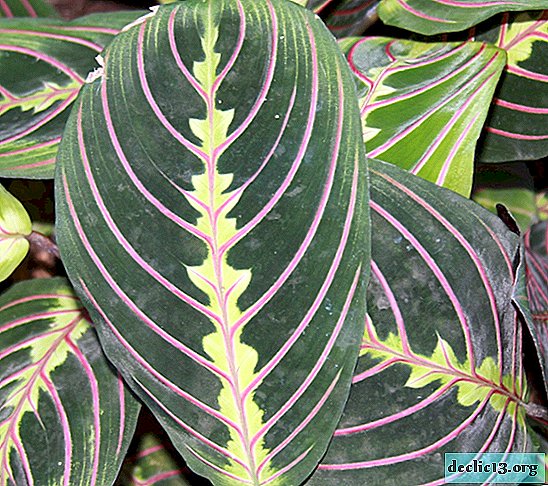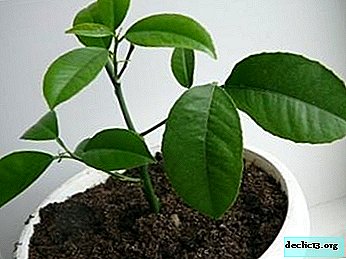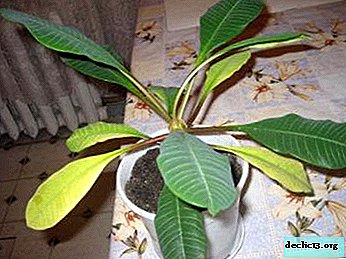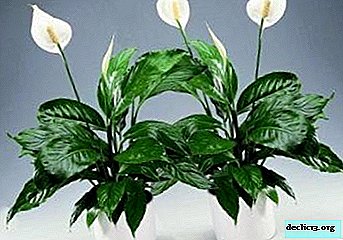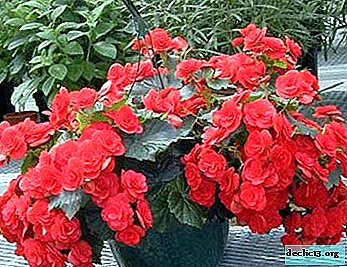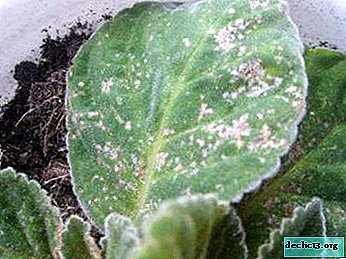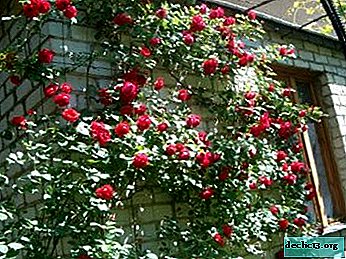The subtleties of growing radishes in a greenhouse
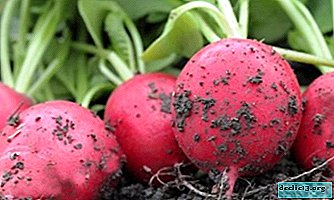 Radish is a healthy vegetable that can be grown at any time of the year. Gardeners manage to get a rich harvest when they cultivate root crops in a greenhouse.
Radish is a healthy vegetable that can be grown at any time of the year. Gardeners manage to get a rich harvest when they cultivate root crops in a greenhouse.
This is a simple matter, so even beginners can do it. This article details how to grow radishes on their own in a greenhouse. Also discussed are the main nuances of planting seedlings, caring for them and treating them from various diseases.
Is it possible to plant radishes in greenhouse conditions?
In the greenhouse, radishes are grown all year round, which cannot be said about open ground. In this case, landing is carried out from the end of April to September. Root crops withstand night frosts, but low temperatures during the day (up to +8) will not allow seedlings to appear earlier. Before frost, it is advisable to perform winter sowing, then you can harvest an early crop in the spring.
When cultivating radishes in open ground, the gardener is very dependent on weather conditions, since long and sharp cooling affects badly the seedlings and the quality of the ripened root crops. And in closed ground with heating there are no such problems.Material for a greenhouse
Many materials have been developed for the construction of the greenhouse, each of which has its own minuses and pluses.
Glass

It has the following advantages:
- excellent light transmission;
- excellent thermal insulation;
- ease of care (easy to clean).
Minuses:
- during intense heat, the inside of the greenhouse is very hot, because the glass acts like a lens;
- glass is a heavy material, therefore, a powerful frame is required;
- brittle material may be damaged by the weight of snow in winter.
Polymer films

Benefits:
- quick installation anywhere and without foundation;
- the film scatters the rays of the sun, making the lighting more uniform.
Minuses:
- quickly damaged;
- the formation of condensate, to which dirt adheres, due to which the normal light transmission of the material is disrupted.
Polycarbonate

Benefits:
- high light transmission;
- excellent thermal insulation;
- strength;
- flexibility;
- aesthetic appearance;
- long term of operation.
Minuses:
- flammability;
- high price.
How to choose the right seeds?
If year-round cultivation of radish is supposed, then it is worth choosing early and early ripening species. Gardeners experimentally determine the appropriate variety for their greenhouses:
- precocious - harvesting after 20 days;
- early - maturity 30 days;
- mid-season - 40 days;
- late grades mature more than 40 days.
Landing time
In the warm structures of the Far North, you can sow seeds at the end of April. If the room is not heated, then landings should be carried out in March-April. Here you need to build on temperature indicators (0 degrees at night and +15 degrees during the day). Given the region, early sowing is performed when the soil thaws by 4 cm. In winter, planting radishes is complicated by a lack of light, so you will have to take care of the additional lighting.
Varieties
Since far from all radish varieties are fruitful in a greenhouse, when choosing a variety it is better to focus on hybrids that are adapted to low light conditions.
 For an early harvest, such varieties are suitable:
For an early harvest, such varieties are suitable:
- Dawn;
- 18 days
- Donar
- French breakfast.
The following varieties have proven themselves well:
- The globe;
- Ksenia;
- Alex
- Greenhouse Griboevsky;
- Beauty.
For planting in the fall and further bookmarking for storage, these types of radishes are suitable:
- Soffit;
- Ice icicle;
- Autumn giant.
How long does it ripen?
Ripening dates of root crops depend on the variety. If you grow radishes in winter and autumn, then you can get the first crop in 5-6 weeks. In spring and summer planting, the crop is harvested 4 weeks after planting.
Productivity from 1 sq. M
About 1 pc can grow on 1 m². radish. The mass of one root crop will be 20-30 g, therefore, from 1 m2 you can get 200 kg of radish (100x20).
Growing Features
How to sow seeds, to what depth?
The procedure and planting radish are simple:
- Make grooves by placing them at a distance of 10 cm.
- Water the recesses, and then plant the seeds to a depth of 1.5 cm.
- There should be a distance of 3-4 cm between the seeds.
Care after sowing
Consider how to care for crops so that good radishes grow quickly.
Conditions of detention
 It is not difficult to take care of the radish, if the soil has been previously prepared, then it remains just to control the temperature and humidity. At the stage of seed germination, the temperature regime should be +18 degrees, and with mass seedlings, cooling of the temperature to +8 degrees is required, otherwise the sprouts will begin to stretch. Further it is necessary to maintain the temperature + 15 ... +20 ° С - during the day, + 8 ... +10 ° С - at night.
It is not difficult to take care of the radish, if the soil has been previously prepared, then it remains just to control the temperature and humidity. At the stage of seed germination, the temperature regime should be +18 degrees, and with mass seedlings, cooling of the temperature to +8 degrees is required, otherwise the sprouts will begin to stretch. Further it is necessary to maintain the temperature + 15 ... +20 ° С - during the day, + 8 ... +10 ° С - at night.
The treatment of crops with tobacco dust mixed with ash will help prevent the appearance of harmful insects (1: 1). It is important to control the frequency of seedlings - thin out the plants in time so that small root crops do not turn out, the distance should be 3 cm.
How often to water?
It is necessary to moisten the radish when the top layer of the earth begins to dry (1 time in 2-3 days). But during the heat, the intensity of radish irrigation is increased. With a lack of moisture, root crops will be rough and bitter.
After each moistening, the soil should be moistened to a depth of 10-15 cm. Only warm and settled water is used for watering.Top dressing
Fertilizing recommended 2 times per season. Drugs with nitrogen microelements are used (per 1 m2 about 30 g).
Hilling
Radish should be spudded with peat or humus mixed half with sand. Do this when the skin peels on the cotyledonary knee. At this time, light for the root crop is unacceptable.
Harvesting and storage
In order for the crop to be stored for a long time, and the root crops preserved their presentation, in the evening the plant needs to be moistened, and in the morning ripe fruits must already be harvested. The tops are cut 3 cm from the root crop, while the roots do not touch. Harvested crops can be stored for a long time in the refrigerator.
Winter cultivation for sale in cassettes
Procedure:
- Before planting, the cassettes are treated with a disinfectant or warmed in the oven.
- Only large and well-dried seeds are used for planting.
- Each cell of the cartridge is filled with fertile soil.
- Seeds are planted in each cell of 1 pc., After all, radishes have almost 100% germination. Then planting material is sprinkled with sand.
- Moisten each cell with a little water daily.
- When growing radishes in winter, he needs to provide light for 12 hours.
- The ripening of the fruits can be determined by their size, and after ripening the vegetable is easily removed from the cassette.
Why doesn’t it grow, goes to the tops, doesn’t tie, crack?

- Radish stretches. The main reason radishes are suddenly pulled out is the lack of light. Also, the cause of this problem may be the thickening of the seedlings.
- Radish crack. This occurs with a lack of moisture, especially if the plant is moistened after a drought. Cracks in the root crop occur due to the increased amount of nitrogen compounds.
- Radish leaves. The most common reason is late sowing. The most inappropriate times are summers. The following reasons for the appearance of tops are also possible:
- heavy soil;
- poor loosening;
- lack of thinning radish.
- Radish is not tied. The main causes of the problem:
- acidic or compressed soil;
- thickening of the landing;
- heatwave;
- glut of fertilizers.
Growing radishes in a greenhouse is a simple matter if you approach it responsibly. It is important not only to properly plant and care for the plant, but also to choose the right radish variety and material for growing in closed ground.


